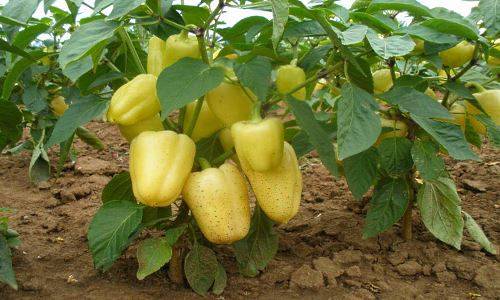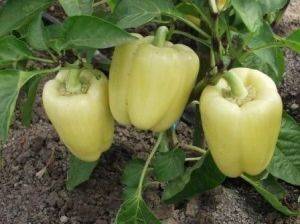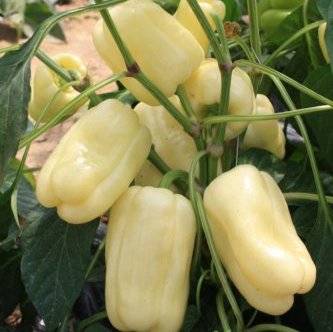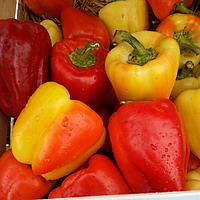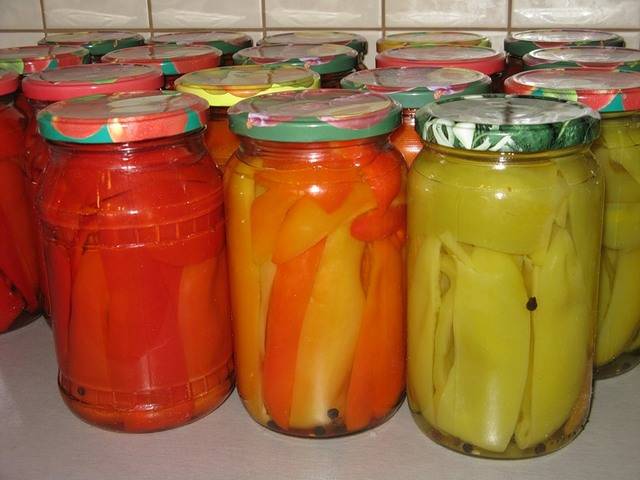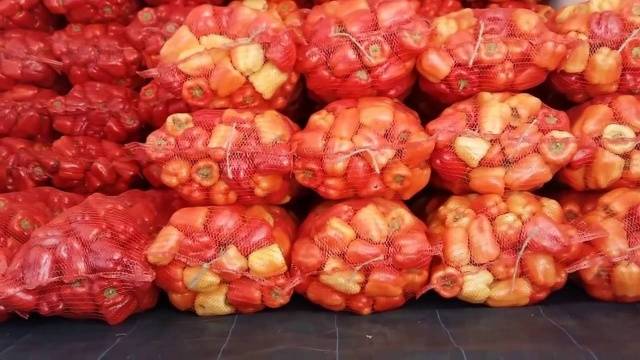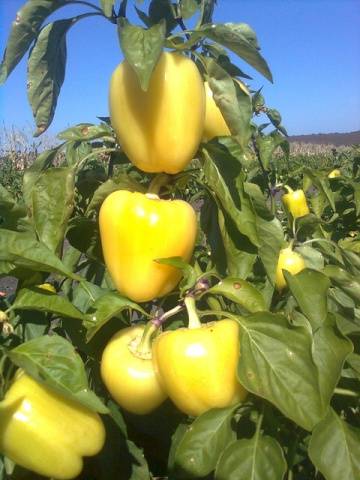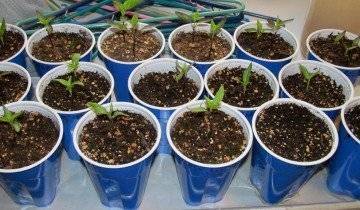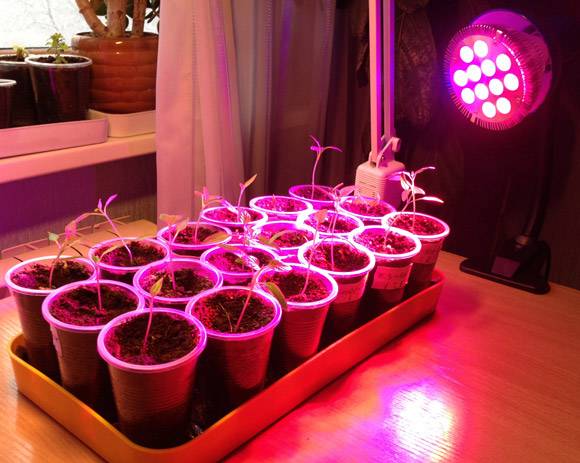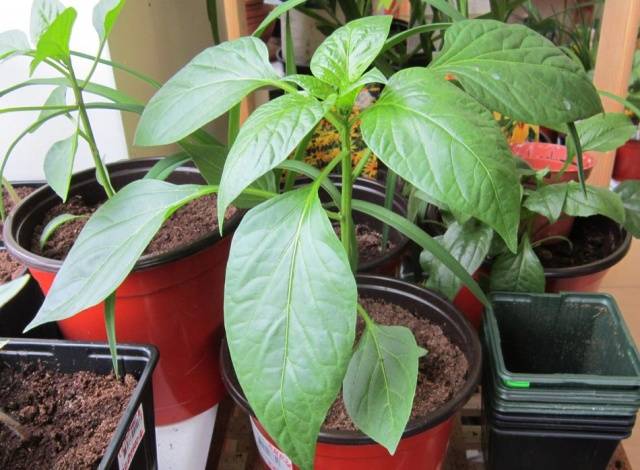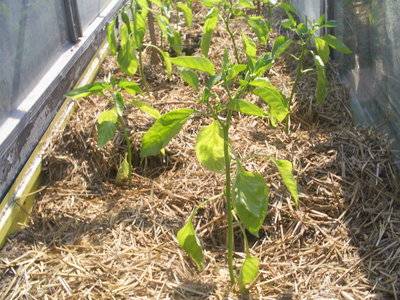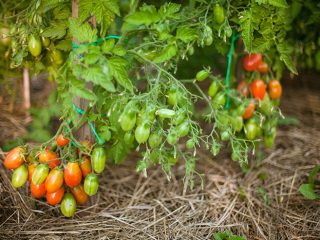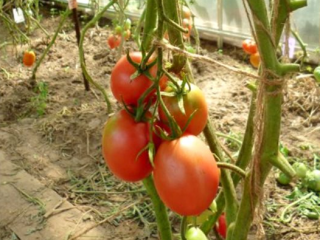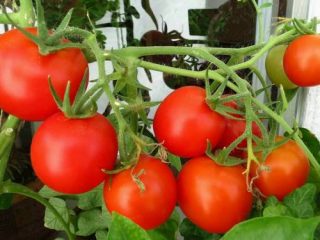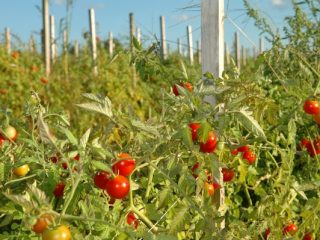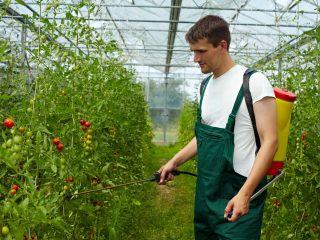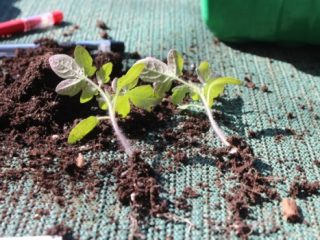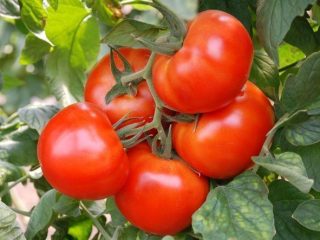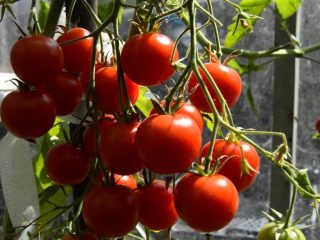Content
Sweet pepper is a vegetable crop that is popular among gardeners. It can be seen in almost every garden plot. In the southern regions of our country there are many farms that specialize in the commercial cultivation of sweet peppers. For them, in addition to consumer qualities, the yield of this vegetable is very important. Therefore, their choice is hybrid varieties.
The benefits of sweet pepper
Sweet peppers are the record holder among vegetables for ascorbic acid content. 100 g of this vegetable contains a double daily dose of vitamin C. And if you consider that this amount also contains a third of the daily requirement of vitamin A, it becomes clear that you cannot find a better vegetable for the prevention of many diseases.
This popular crop has not only many varieties, but also hybrids.
Advantages and disadvantages of hybrid varieties
Hybridization is the crossing of two or more varieties of peppers or other crops in order to obtain new predetermined properties. Attention! Heterotic pepper hybrids are distinguished by greater vitality compared to conventional varieties.
The following advantages of hybrids can be noted.
- High vitality.
- Aligned fruit and excellent appearance, both of these qualities do not change as the crop matures.
- High plasticity - hybrid plants adapt well to any growing conditions and tolerate the vagaries of the weather well.
- Disease resistance.
Hybrids have few disadvantages: the seeds are more expensive than the varieties; they cannot be collected for sowing, since the seedlings will not repeat the parental characteristics and will not produce a good harvest the next season.
Many foreign producers have long been sowing only seeds of pepper hybrids, despite their high cost. This approach is fully justified by the higher cost of the resulting quality products. In our country, too, hybrid seeds are increasingly being chosen for sowing. One of these hybrids is Madonna F 1 sweet pepper, reviews of which are mostly positive. What are its features and advantages? To understand this, we will give a full description and compile a description of the Madonna F 1 pepper, which is shown in the photo.
Description and characteristics
This pepper hybrid was included in the State Register of Breeding Achievements in 2008 and is recommended for the North Caucasus region. It is grown both in open ground and in greenhouses. Madonna F 1 pepper seeds are produced by the French company Tezier, which has been engaged in seed production for more than two hundred years.
What can we say about the hybrid pepper Madonna F 1:
- the variety belongs to the early variety, some sellers position it as ultra-early - the first fruits reach technical ripeness within 2 months from germination; biological ripeness is observed 40 days after the formation of the ovary;
- the bush is powerful, in open ground it grows up to 60 cm, in a greenhouse it is much higher, where it can reach a meter in height;
- the plant has short internodes and is well leafed - the fruits will not suffer from sunburn;
- they have a heart-shaped elongated shape, almost cuboid;
- the color of the fruits at technical and biological ripeness varies greatly: at the first stage they are ivory-colored, at the second they turn completely red; This pepper hybrid is also beautiful during the transition period, when a delicate blush appears on the pale yellow surface of the fruit;
- the wall thickness is large - in technical ripeness it reaches 5.7 mm, in fully ripe fruits - up to 7 mm;
- The size of the fruit did not disappoint either - 7x11 cm, with a weight of up to 220 g;
- the taste in both technical and biological ripeness is very good, soft and sweet, the sugar content of Madonna F 1 pepper fruits reaches 5.7%;
- they are characterized by a high content of vitamins: 165 g of ascorbic acid per 100 g of fully ripe fruits;
- the purpose of the hybrid pepper Madonna F 1 is universal; fruits collected at technical ripeness are good for fresh salads, stuffing and stews; fully ripe ones are excellent in marinade;
- when commercially grown, peppers are in demand at all stages of maturity: those collected at technical ripeness sell well on the early produce market, fully ripe ones are successfully sold at a later date;
Description of pepper Madonna F 1 will not be complete without mentioning its productivity. It is not inferior to the standard among white-fruited hybrid varieties - the Fisht f1 hybrid and amounts to 352 centners per hectare. This is 50 quintals more than the Podarok Moldova variety. If you adhere to a high level of agricultural technology, you can collect 50 tons of Madonna F 1 pepper from each hectare. At the same time, the yield of marketable products is very high – up to 97%.
This hybrid also has disadvantages, which are noted by both amateur vegetable growers and farmers.
- The shape is not quite cuboid, and these are the fruits that are in greatest demand.
- Overripe fruits are prone to the formation of small cracks, and during storage the skin becomes wrinkled.
Often gardeners pick all the fruits without waiting for biological ripeness, believing that the creamy color indicates that the Madonna F 1 pepper is already ripe.
Features of cultivation
Hybrid pepper Madonna F 1 requires strict adherence to all rules of agricultural technology. Only in this case can you harvest the large harvest declared by the manufacturer. What does Madonna F 1 need?
At the seedling stage
The seeds of this pepper do not require preparation for sowing - Tezier has taken care of everything and supplies fully processed seed material. Since the seeds are not soaked, they take a little longer to germinate.
It is better to sow Madonna F 1 pepper seeds in separate cassettes or pots. This hybrid variety is distinguished by its great growth vigor and does not like competitors near it. Seeds sown in separate containers make it easy to transplant seedlings into the ground without disturbing the roots.
Conditions for keeping seedlings:
- sowing in loose, moisture-absorbing, nutritious soil to a depth of 1.5 cm;
- temperature at night – 21 degrees, during the day – from 23 to 27 degrees. A deviation from the temperature regime by 2 degrees leads to a growth delay of 3 days.
- a lot of light - daylight hours for pepper should last 12 hours, if necessary, supplementary illumination with phytolamps is necessary;
- timely watering with warm, settled water - pepper does not tolerate complete drying out of the earthen clod;
- double fertilizing with complete mineral fertilizer with low concentration microelements.
Planting seedlings and care
Powerful Madonna F 1 pepper bushes do not like dense planting. In a greenhouse it is planted with a distance between rows of 60 cm, and between plants - from 40 to 50 cm. In open ground, there are 3 to 4 plants per square meter. m.
What does the Madonna F 1 pepper need after planting:
- Light – plants are planted only in areas that are fully illuminated during the day.
- Water. Pepper does not tolerate waterlogging of the soil, but it loves watering. Water only with water heated in the sun. After planting seedlings and before the formation of the first fruits, soil moisture should be about 90%, during growth - 80%. The easiest way to ensure this is by installing drip irrigation. During fruit growth, it is impossible to reduce, let alone stop, watering. The thickness of the fruit wall directly depends on soil moisture. A properly organized irrigation system and maintaining soil moisture at the required level increases the yield of Madonna F 1 pepper by 3 times.
- Mulching. It stabilizes the temperature of the soil, protects it from drying out, maintains it in a loose state and prevents it from growing weeds.
- Feeding. Without sufficient nutrition, you cannot get a good pepper harvest. This crop does not like overfeeding with nitrogen - leaves begin to grow to the detriment of the harvest. Peppers are fed with complex mineral fertilizer with the obligatory inclusion of microelements. The first fertilizing is carried out after the seedlings have rooted, further fertilizing is carried out at intervals of 2 weeks. The fertilizer is dissolved according to the instructions. Each bush needs about 1 liter of solution. If signs of blossom end rot appear, fertilizing with calcium nitrate will be required. If chlorosis is observed, plants need iron, magnesium and boron.
- Garter and shaping. Plants heavily laden with crops need to be tied to stakes or twine to prevent them from being torn out of the ground. Pepper Madonna F 1 requires mandatory formation. In open ground, it is led into one stem, cutting off all the stepsons. It is permissible to leave 2 or 3 trunks in the greenhouse, but each branch must be tied up. The crown flower is plucked out at the seedling stage.
This tasty and beautiful pepper is loved by both gardeners and farmers. With good care, it produces a stable harvest of fruit suitable for any use.
More information about growing Madonna F 1 pepper can be seen in the video:
